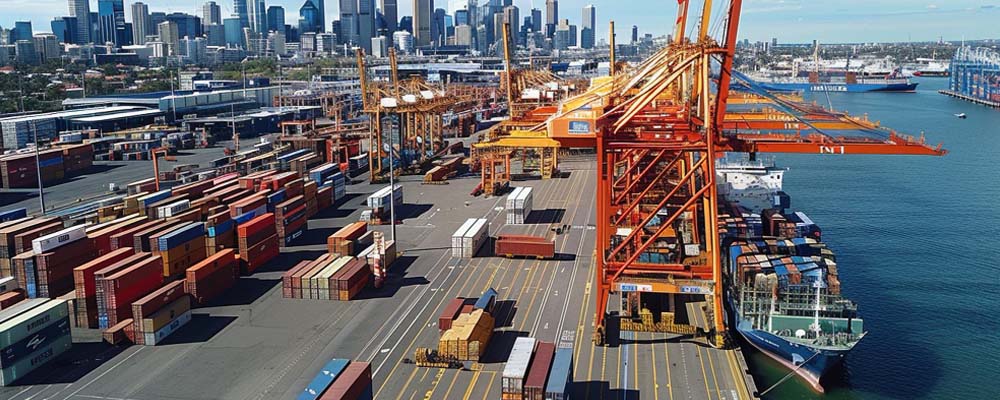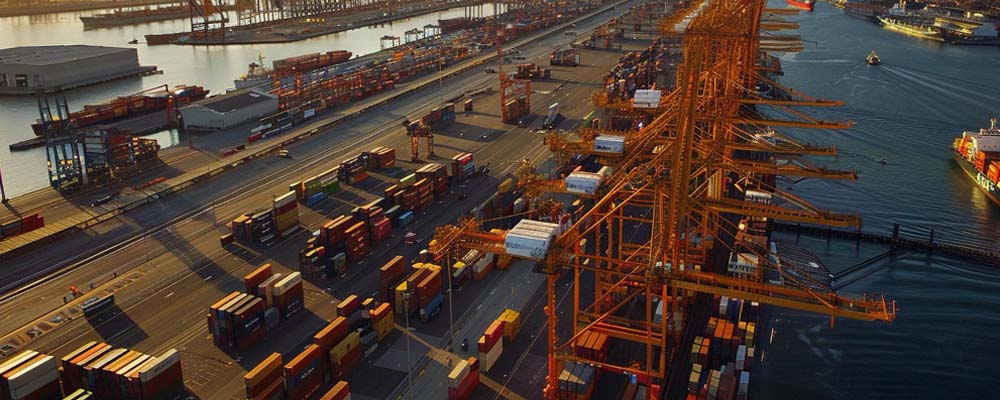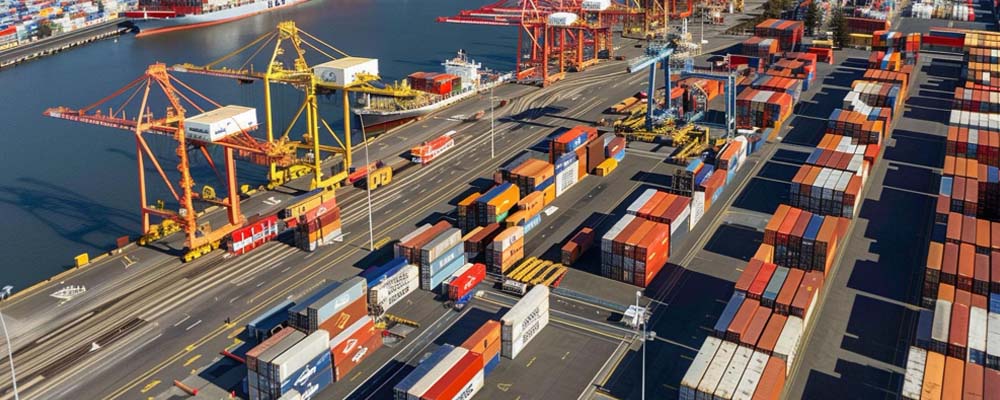
In the fast-paced world of logistics and supply chain management, knowing key ports can set you apart. This article will help you understand the significance of the top five major U.S. ports. Whether you’re a freight forwarder, logistics provider, or e-commerce business, this guide is tailored for you. We’ll also share practical tips for utilizing these ports effectively and answer common questions about port logistics. Ready to streamline your operations? Let’s get started.
Top 5 Major Ports in the USA
1. Port of Los Angeles
The Port of Los Angeles, commonly known as America’s Port, is the busiest container port in the U.S., handling over 9 million TEUs annually. Strategically positioned in San Pedro Bay, it plays a vital role in facilitating trade between the U.S. and Asia. Its location near key Asian manufacturing hubs, combined with its extensive rail and road connections, ensures efficient transportation of goods across the country.
Equipped with state-of-the-art container terminals and advanced cargo handling technologies, the port is capable of managing various types of cargo. Additionally, its advanced IT system improves cargo visibility and tracking, offering logistics providers exceptional accessibility and operational efficiency.
2. Port of Long Beach
Located alongside the Port of Los Angeles, the Port of Long Beach plays a crucial role in U.S. shipping, managing over 8 million TEUs each year. Known for its environmental initiatives and efficiency, it shares resources and infrastructure, forming one of the world’s most efficient port complexes. Importers and exporters favor the Port of Long Beach for its reliability and speed.
The port utilizes advanced cargo handling technologies and offers extensive warehousing options, supported by an efficient intermodal transportation system. Its commitment to sustainability not only enhances its operational efficiency but also attracts eco-conscious companies, making it a preferred choice in the shipping industry.
3. Port of New York and New Jersey
The Port of New York and New Jersey, the largest on the East Coast, handles over 7 million TEUs annually and serves as a key gateway to the northeastern U.S. Its strategic location offers quick access to a major consumer market, with highways and railways ensuring efficient product distribution.
Equipped with modern container terminals and extensive warehousing facilities, the port offers advanced logistics services that support its operations. The port is actively enhancing capacity and efficiency through ongoing infrastructure improvements, solidifying its critical role in the region’s supply chain.
 4. Port of Savannah
4. Port of Savannah
The Port of Savannah is rapidly emerging as one of the fastest-growing container ports in the United States, handling over 4 million TEUs annually. Its strategic location on the Atlantic coast enables quick access to major markets in the Southeast, making it a vital player in the region’s logistics landscape. The port is well-regarded for its efficient operations and expansive facilities, attracting numerous importers and exporters.
Key features of the Port of Savannah include state-of-the-art container terminals, extensive warehousing options, and a robust rail network. Ongoing expansion projects are set to enhance its capacity and efficiency, further solidifying its position as a leading hub for cargo movement in the southeastern U.S.
5. Port of Houston
The Port of Houston, the busiest in the U.S. by tonnage, handles over 2 million TEUs annually and is a key trade hub for the Gulf Coast. Its proximity to oil and gas production areas strengthens its role in energy shipments, supported by pipelines and rail connections for efficient transportation.
Equipped with advanced cargo handling, ample storage, and a robust intermodal system, the port is a top choice for logistics providers, solidifying its importance in national and global supply chains.
Benefits of Utilizing USA Ports
Efficiency and Speed
U.S. ports are equipped with state-of-the-art technologies and facilities that ensure quick and efficient handling of cargo. This reduces wait times and ensures timely deliveries, which is crucial for maintaining supply chain efficiency.
Strategic Locations
The strategic locations of these ports allow for quick access to major consumer markets and manufacturing hubs. This ensures that goods can be transported quickly and efficiently, reducing transportation costs.
Advanced Infrastructure
U.S. ports leverage advanced cargo handling equipment and extensive warehousing options to efficiently manage a wide variety of cargo. This proactive approach ensures safe handling of goods, minimizing the risk of damage.
 Logistics Tips for Using USA Ports
Logistics Tips for Using USA Ports
Plan Ahead
Proper planning is crucial for ensuring smooth operations. This includes scheduling shipments in advance, coordinating with port authorities, and ensuring all necessary documentation is in order.
Utilize Technology
Leveraging technology can enhance the efficiency of your logistics operations. This includes using advanced tracking systems, utilizing port information systems, and leveraging data analytics to optimize operations.
Partner with Reliable Service Providers
Partnering with reliable service providers can help ensure smooth operations. This includes working with experienced freight forwarders, logistics providers, and customs brokers who are familiar with the workings of U.S. ports.
FAQs About Ports in USA
What are the busiest ports in the USA?
The busiest ports in the U.S. are the Port of Los Angeles, Port of Long Beach, Port of New York and New Jersey, Port of Savannah, and Port of Houston.
How can I ensure my cargo is handled efficiently at U.S. ports?
Proper planning, leveraging technology, and partnering with reliable service providers can help ensure your cargo is handled efficiently at U.S. ports.
What are the benefits of using U.S. ports for international trade?
U.S. ports offer efficiency and speed, strategic locations, and advanced infrastructure, making them ideal for international trade.
 Conclusion
Conclusion
Navigating U.S. ports can be challenging, but with the right strategies, you can streamline logistics for efficient cargo handling. Understanding key U.S. ports and their advantages is vital for staying competitive. Leveraging their infrastructure and locations improves supply chain efficiency and ensures timely deliveries, with success depending on careful planning and reliable partners.




 4. Port of Savannah
4. Port of Savannah Logistics Tips for Using USA Ports
Logistics Tips for Using USA Ports Conclusion
Conclusion



